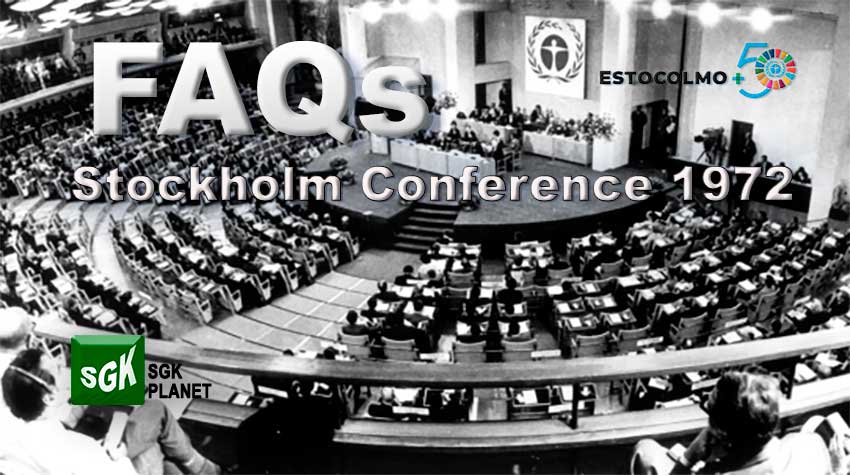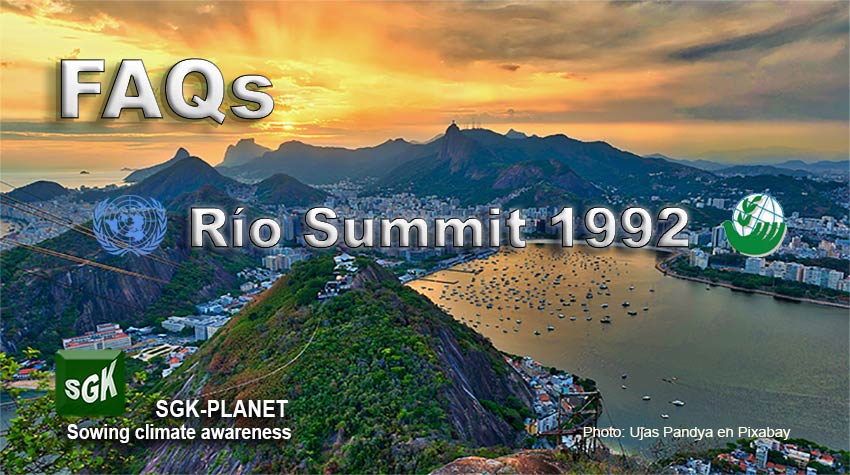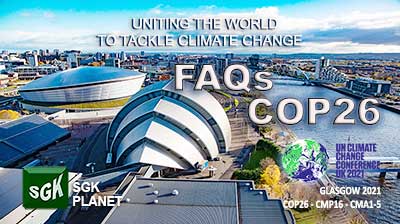FAQS about the Stockholm Conference 1972

8. What have been Sweden’s contributions to climate science?
Sweden, whether at the national or individual level, has at all times manifested an environmentalist vocation through important contributions to climate science and the fight against climate change. Let us see:
In 1896 Svante Arrhenius proclaims the relationship of CO2 in the atmosphere and global temperature
The Swedish scientist claims that fossil fuels could accelerate global warming, establishing a relationship between atmospheric carbon dioxide concentrations and global temperature. In this way he takes a major step towards proving the theory of the greenhouse effect.
In 1972. At the initiative of Sweden, the Stockholm Conference, the First Earth Summit, is held.
The origins of the Stockholm Conference date back to a proposal by the Swedish government, set forth in a letter dated May 20, 1968, addressed to the United Nations Organization, in which it proposes to convene a conference under the auspices of the UN. It literally states: “That man-made changes in the natural environment had become an urgent problem for developed and developing countries, and that these problems could only be solved through international cooperation.”
In 2007. The Stockholm Resilience Center is created
Between Stockholm University and the Beijer Institute for Ecological Economics of the Royal Swedish Academy of Sciences, the Stockholm Resilience Center (included in our Anthropocene Magazine), is founded as a non-profit institute, with the mission of promoting research for the management of social systems. -ecological, to ensure ecosystem services for human well-being and resilience for long-term sustainability.
Between 2009-2015. The Stockholm Resilience Center creates the theory of the nine limits of the planet
The Swedish scientist Johan Rockström and the American Will Steffen group together a series of data obtained by researchers at different times. In a joint effort with scientists from the Stockholm Resilience Center, in 2009 and 2015 they created the Theory of the nine limits of the planet (link to Stockholm Resilience Center). In the hypothesis they propose that it would be very dangerous to cross these borders, which has already occurred in four of them: the climate, the alteration of the vegetal cover, the disappearance of animal species and the alteration of the biogeochemical flows, in which the cycles of phosphorus and nitrogen play an essential role.
- Greta Thunberg and the “Friday for Future” movement
On August 20, 2018, Greta Thunberg, (link to FAQS about Climate Emergency, by SGK-PLANET) who was then in the ninth grade, decided not to attend school until September 9, the date of the Swedish general election. Her protest was based on the Swedish government’s inaction in the face of forest fires due to a major heat wave in Sweden.
After the elections she continued to protest through her Friday school strike, which transcended the borders of Sweden and became an international movement, from which she derived the “Friday for future” movement. Her actions inspired young people around the world to protest the lack of effective action by most governments. Thunberg appeared at the most important forums in various countries. In December 2018, more than twenty thousand students demonstrated in more than 270 cities around the world.
- The Swedish government’s contribution of 120 million for rural farmers
Made to help farmers adapt to a constantly changing climate and help reduce greenhouse gas emissions in developing countries.
- Sweden announces that it wants to ban gasoline cars by 2030.
Recommended reading: Anthropocene Magazine, by SGK-PLANET
At the end of answer No. 10, you can see all of the 7 “Proclamations” and the 26 “Principles” of the “Stockholm Declaration”.
FAQS about the Stockholm Conference 1972
1. What is the Stockholm Conference or First Earth Summit?
2. What was the antecedents of the 1972 Stockholm Conference?
3. What were the objectives and results of the Stockholm Conference?
4. Why is the “Stockholm Conference” known as the “First Earth Summit”?
5. What are the “7 Proclamations” and the “26 Principles” of the Stockholm Declaration?
6. What do “Proclamation No. 1” and “Principle No. 1” of the Stockholm Declaration tell us?
7. What impacts did the Stockholm Conference have?
8. What have been Sweden’s contributions to climate science?
9. Have we listen the Stockholm Declaration in these 50 years?


